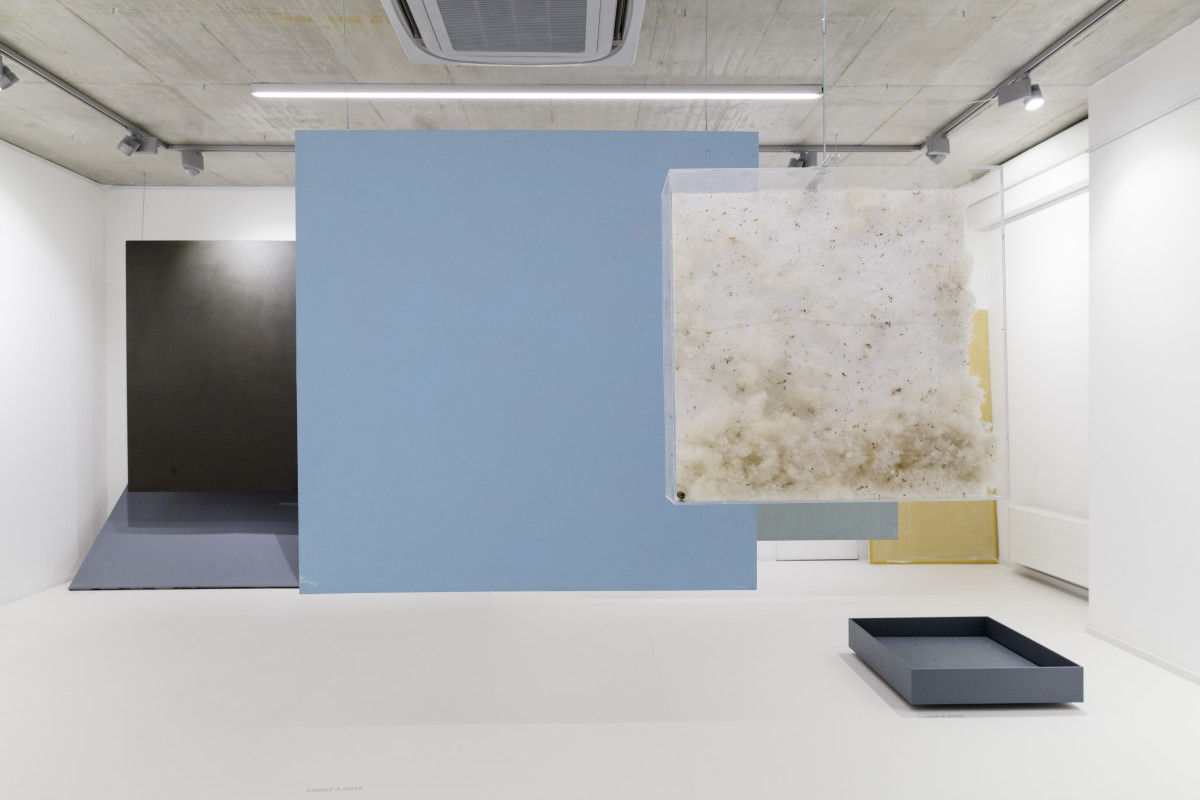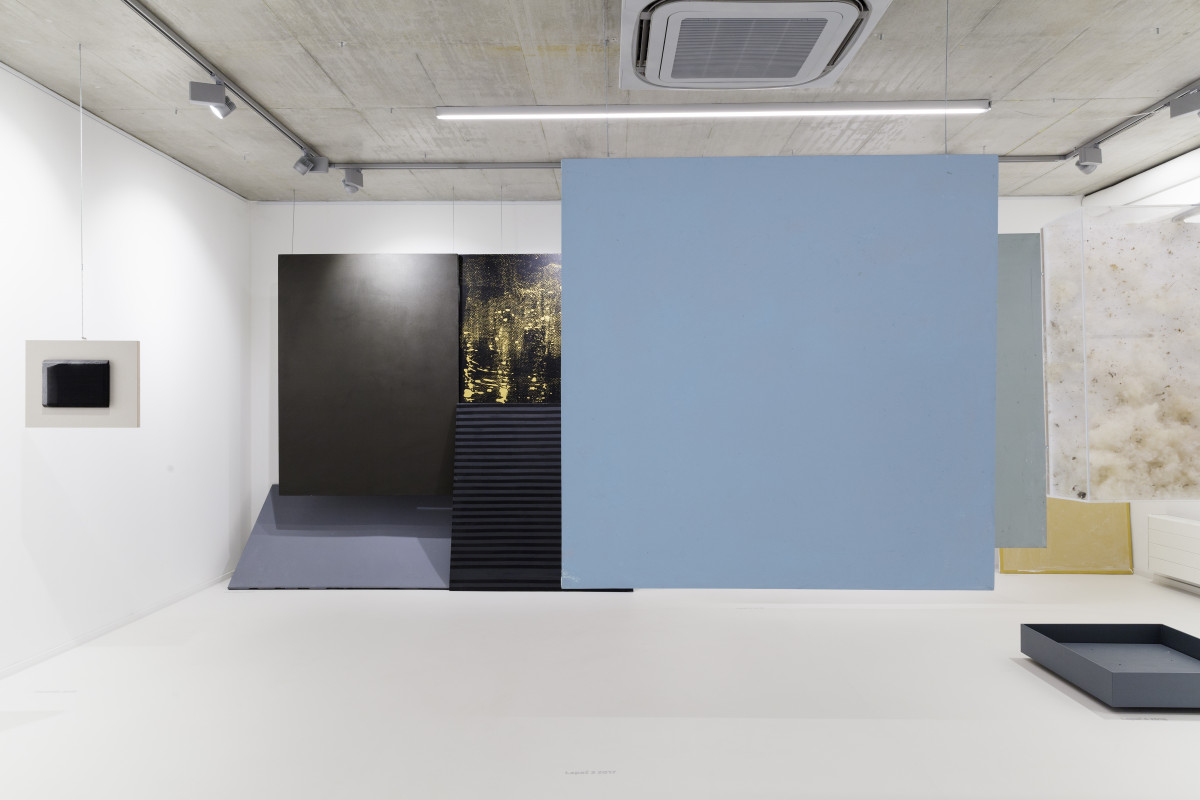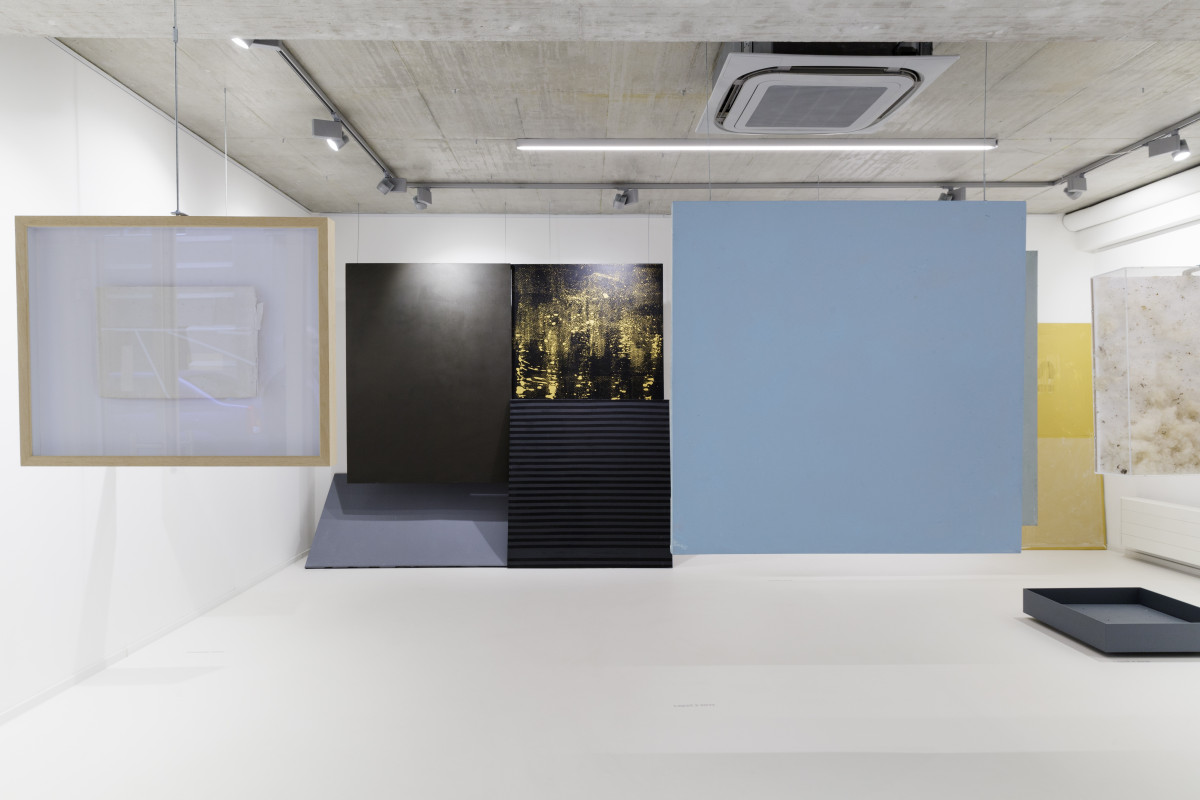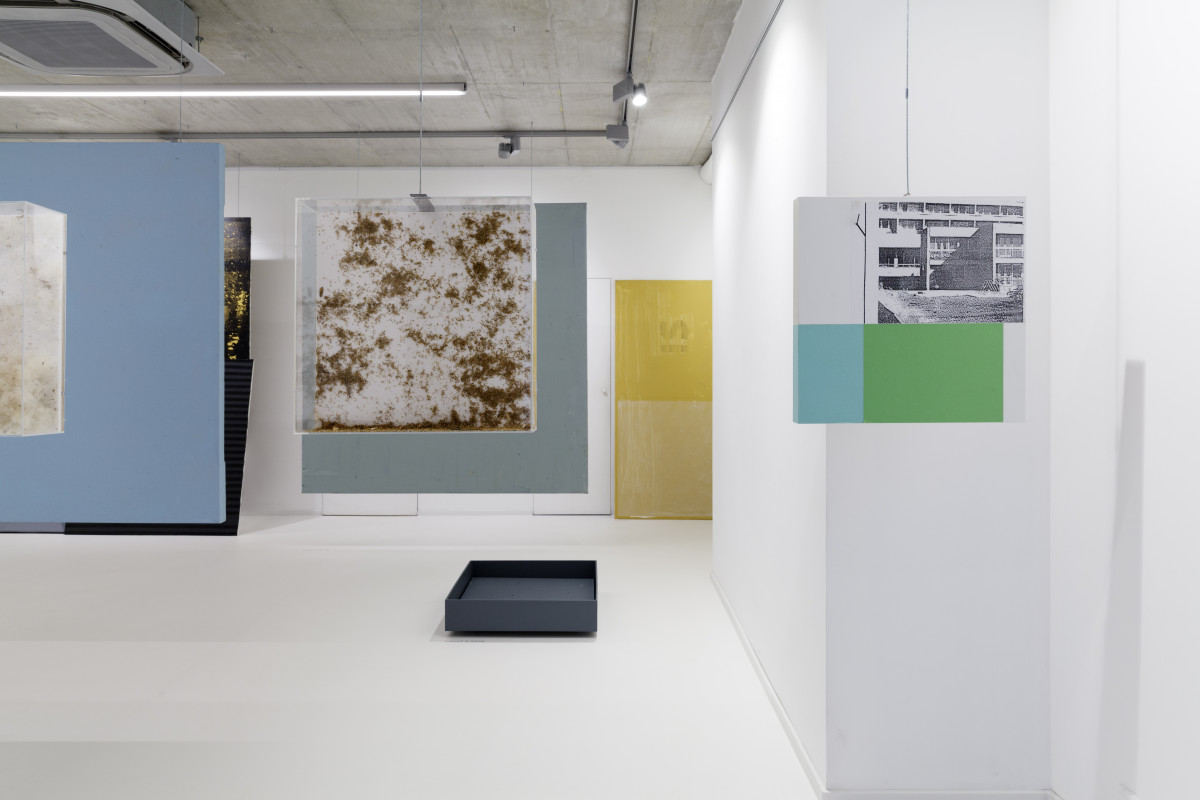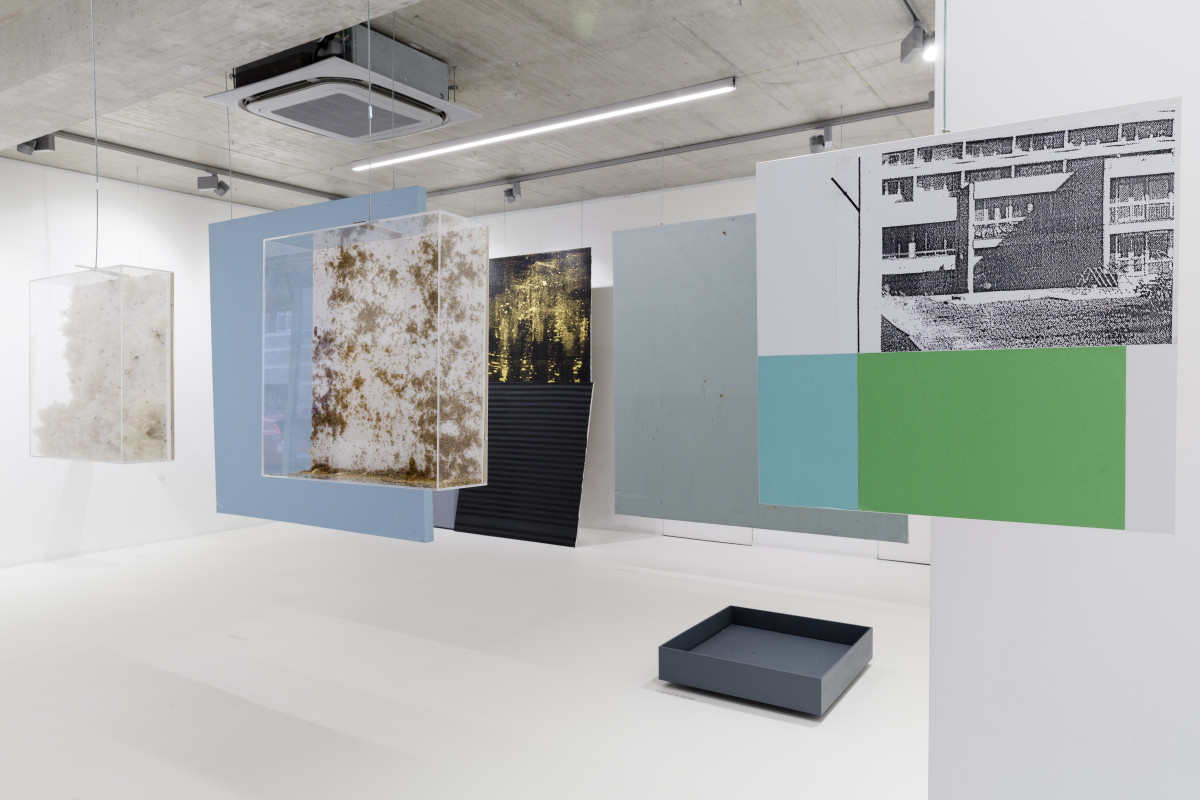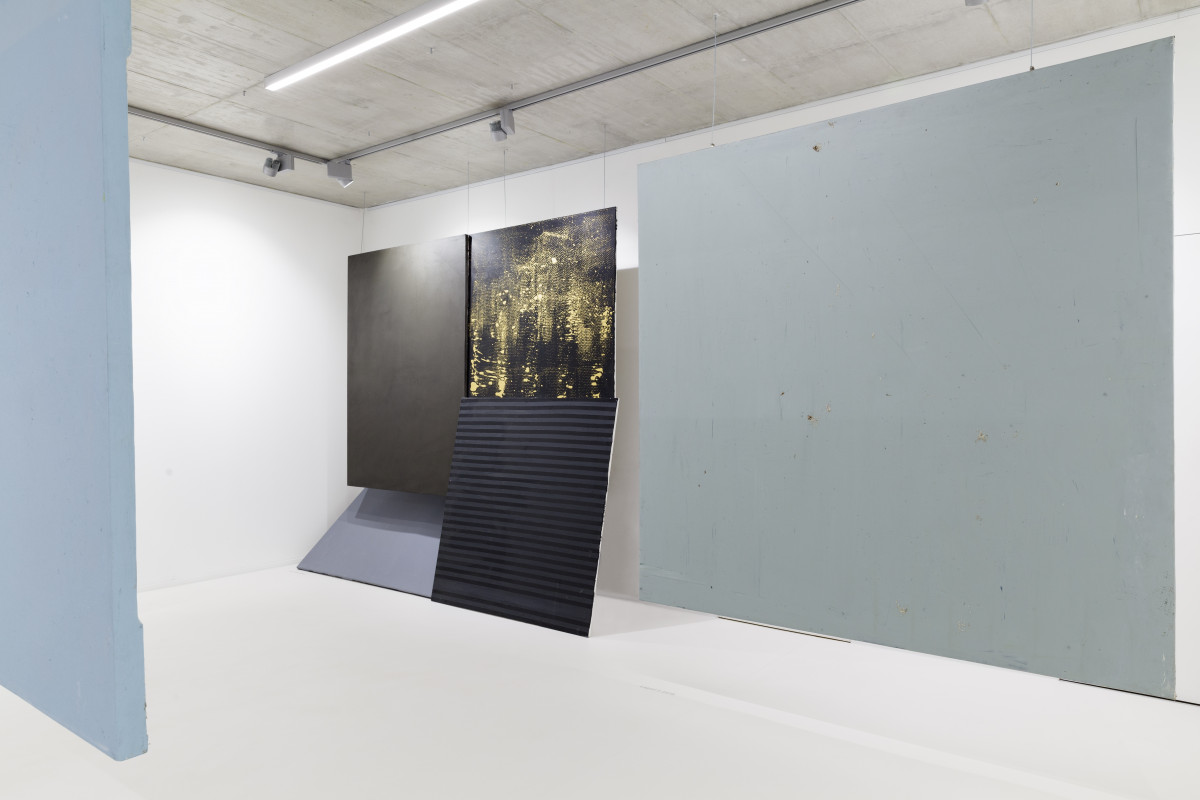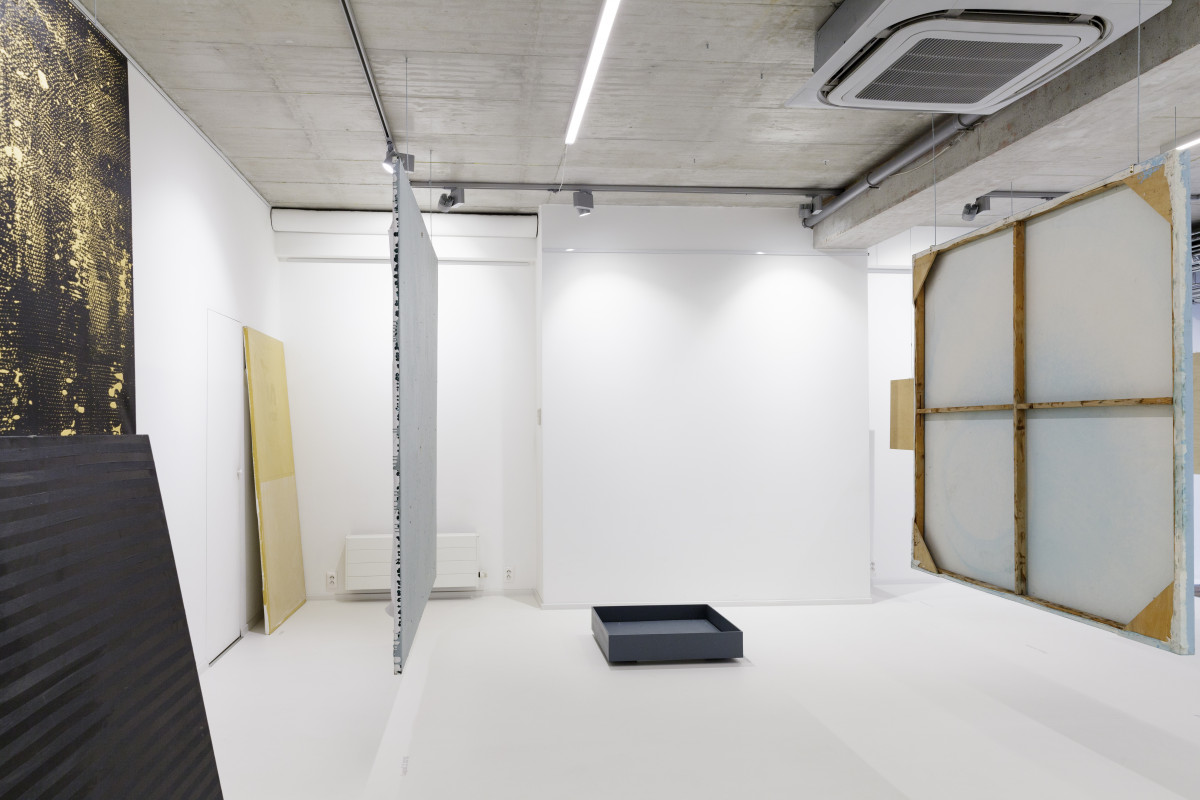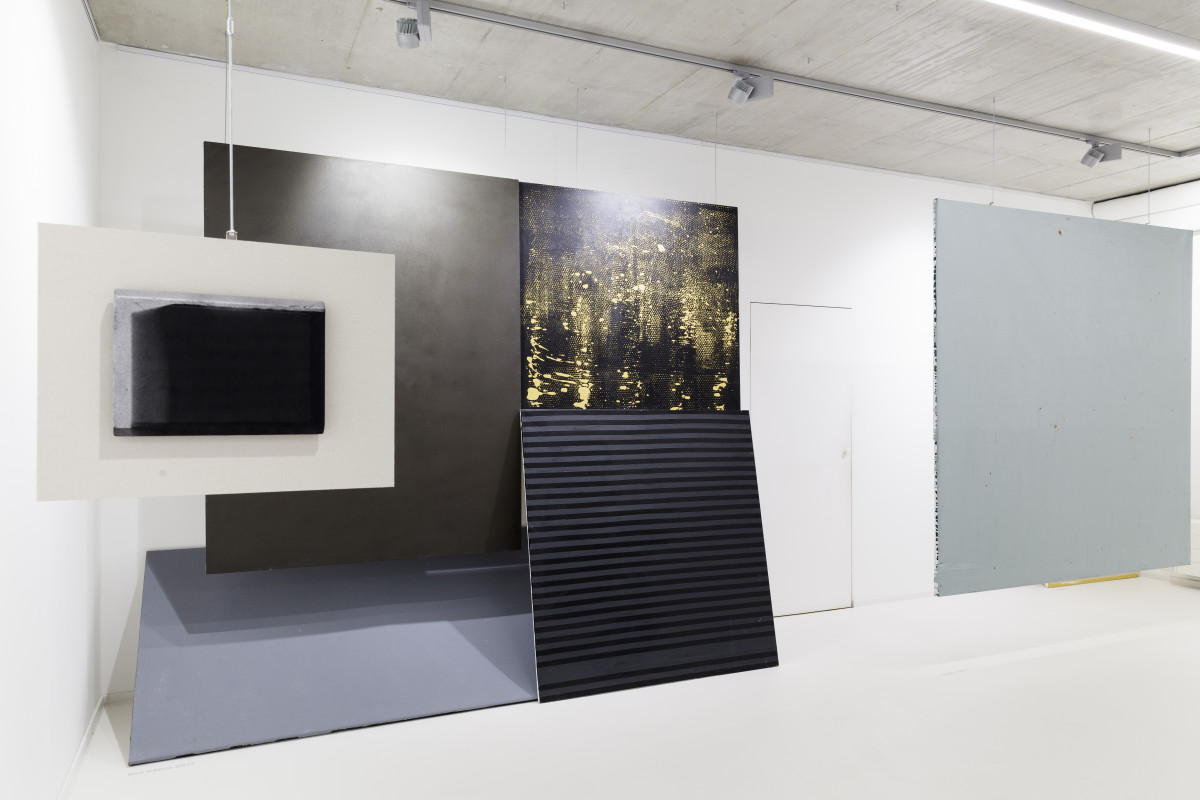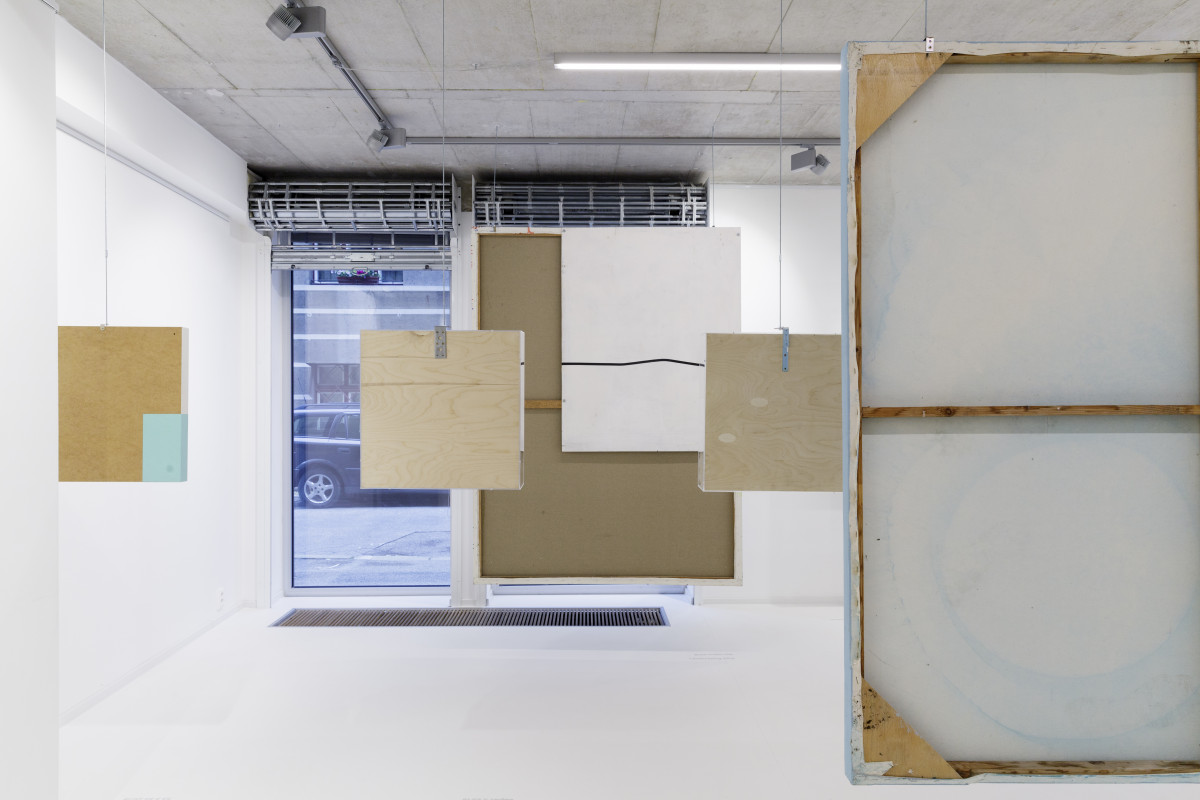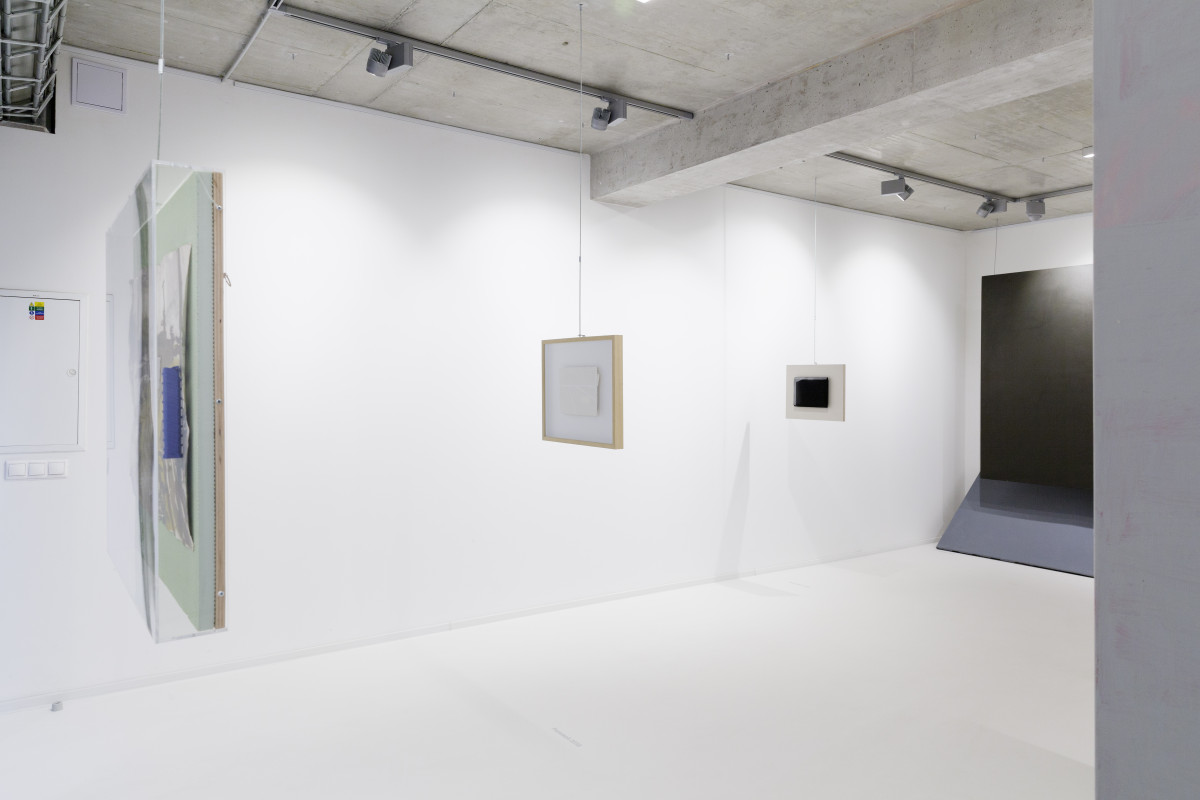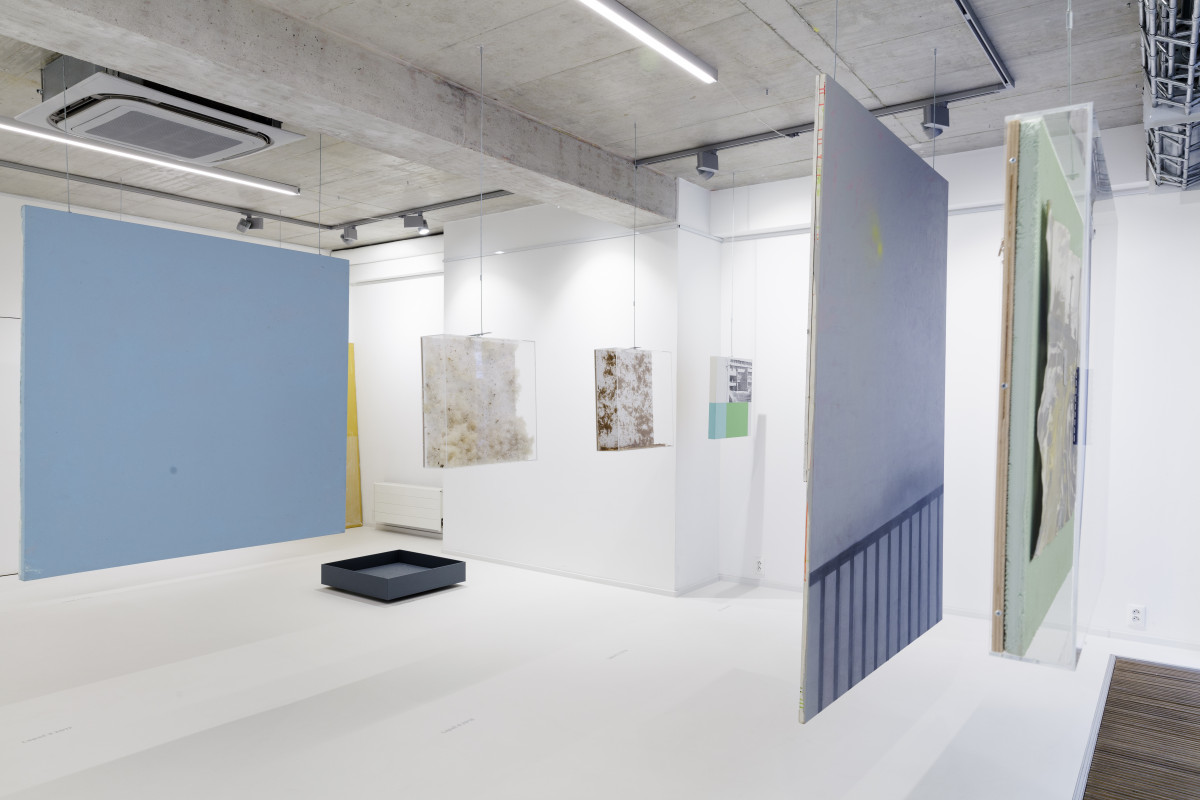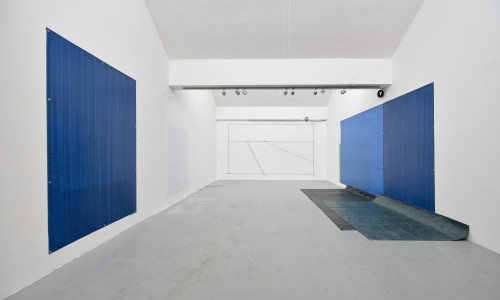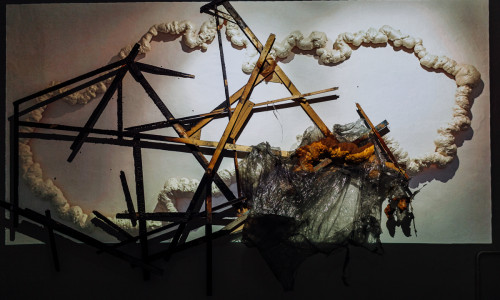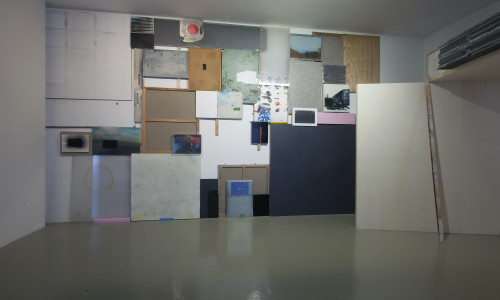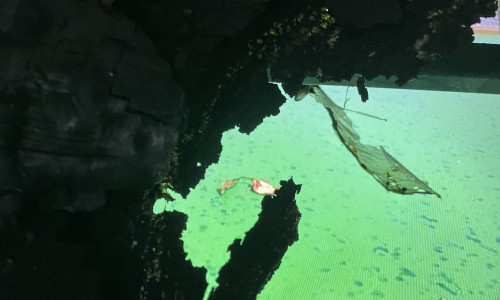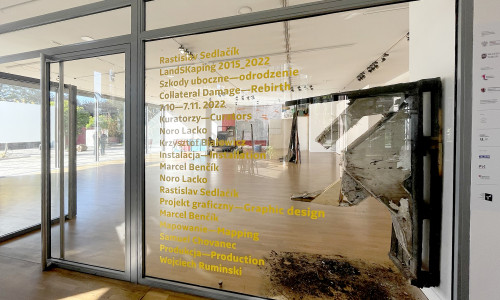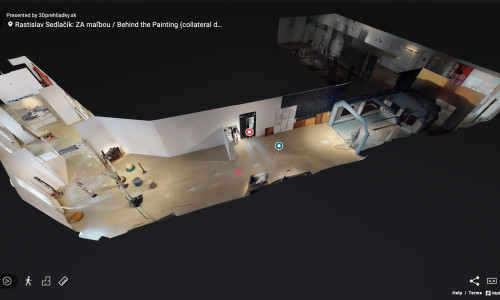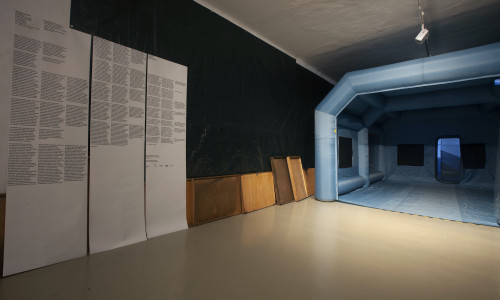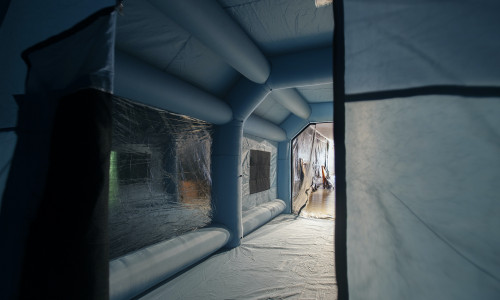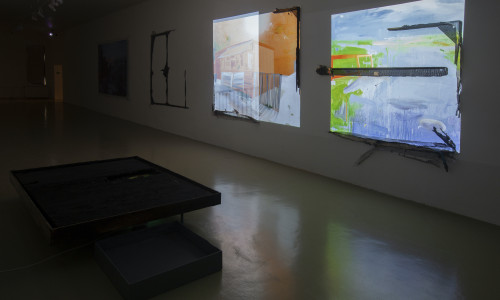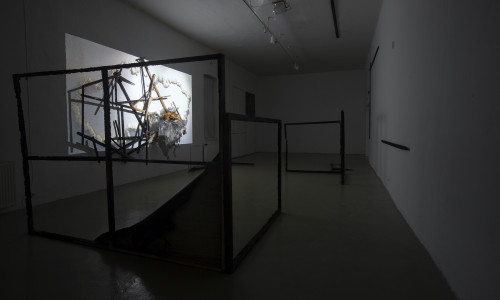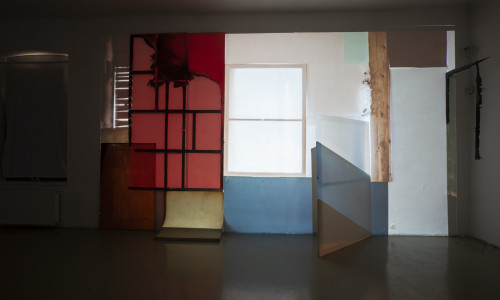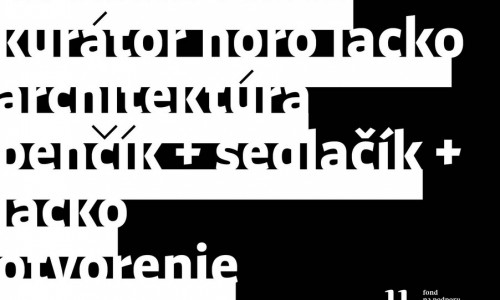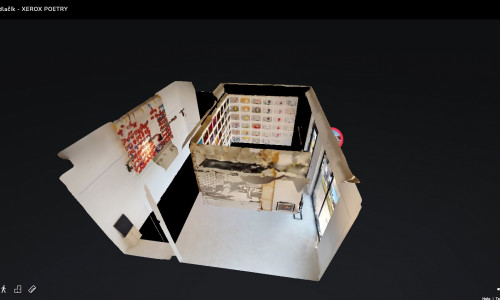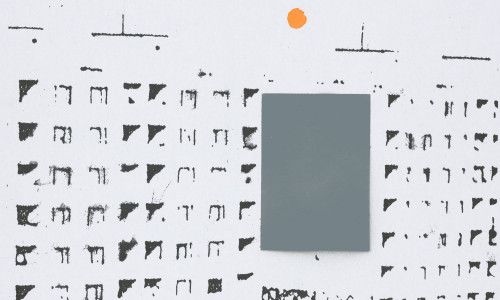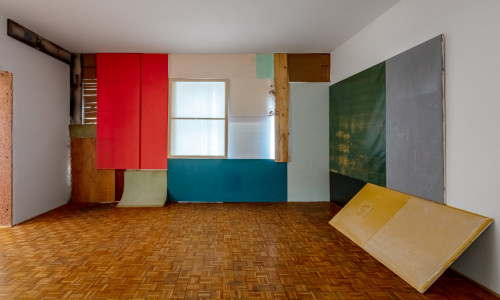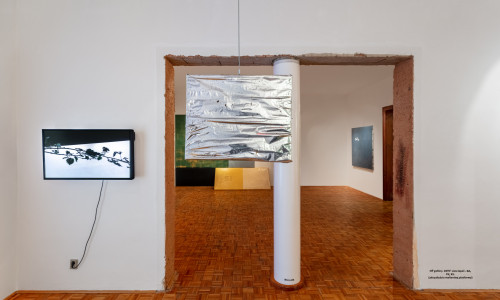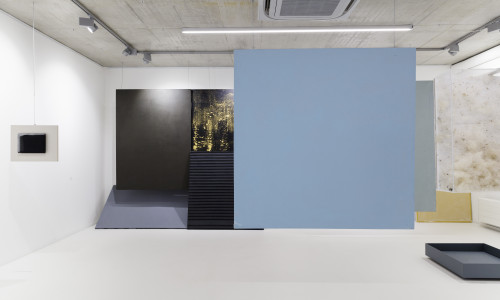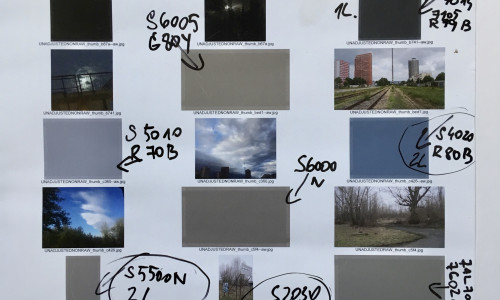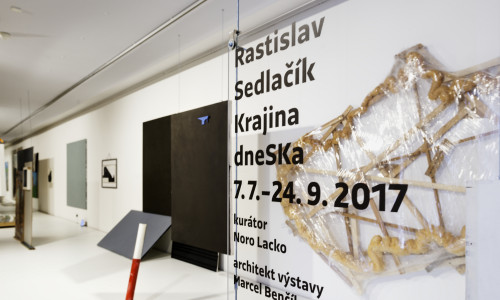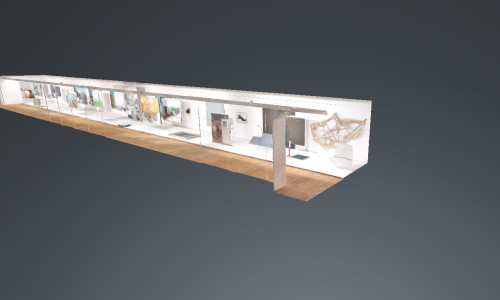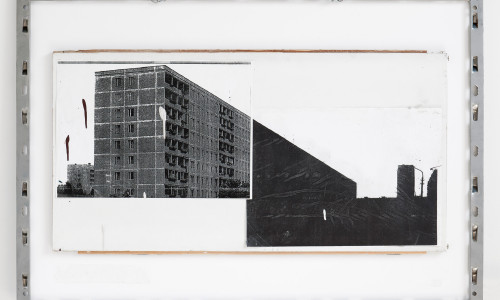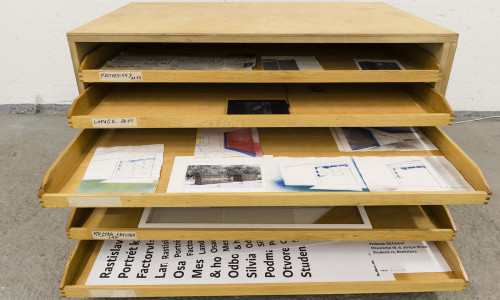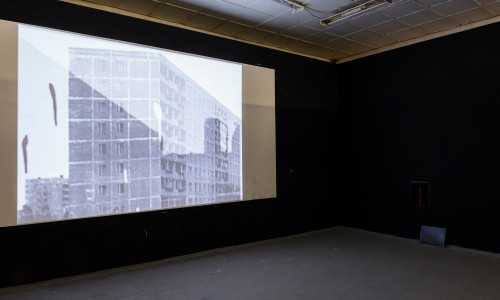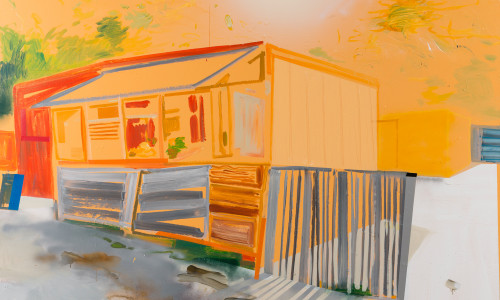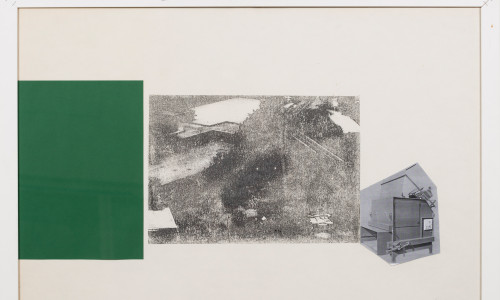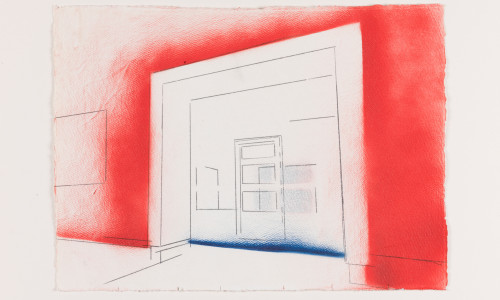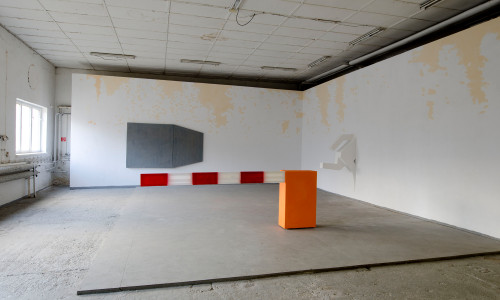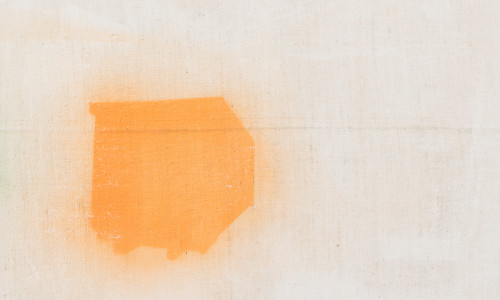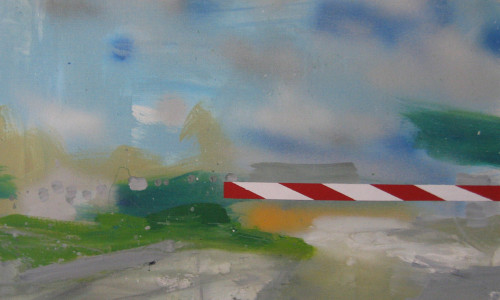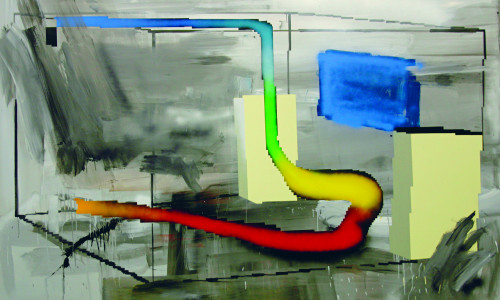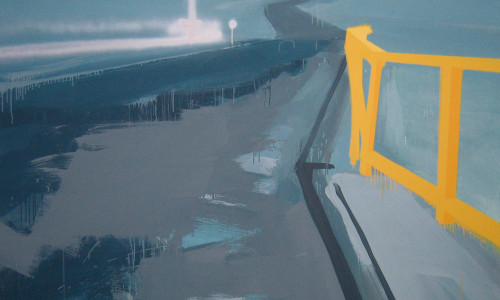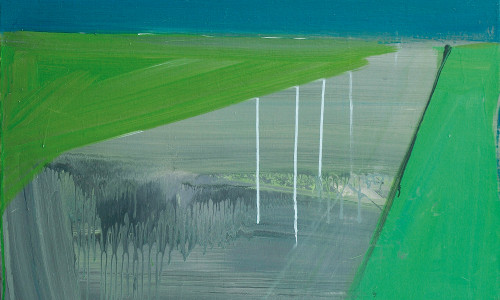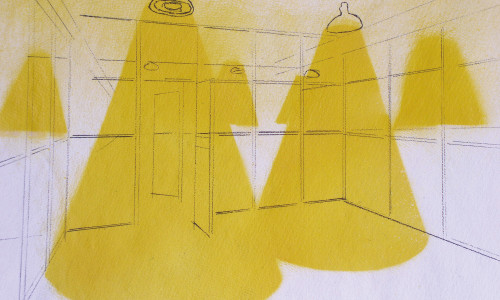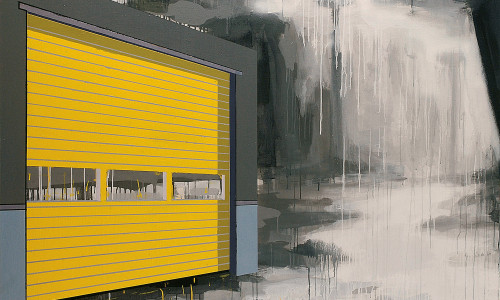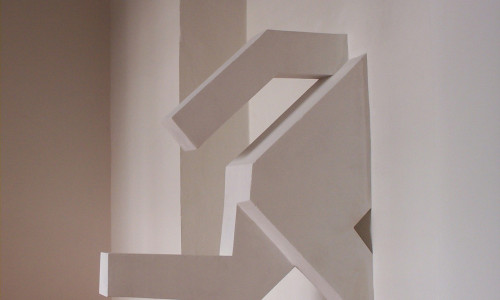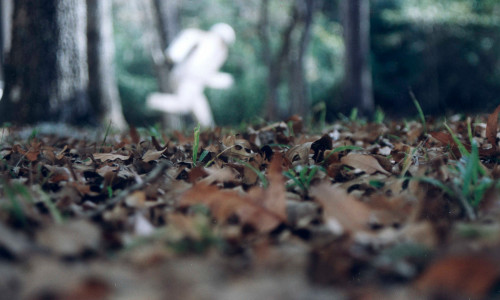MestSKá krajina lab./ Urban Landscape Lab.
Rastislav Sedlacik
Galéria Čin- Čin, Bratislava
foto Martin Deko
2018
Rastislav Sedlačík: MestSKá krajina lab. / City LandSKape lab/pThe
Galéria Čin- Čin, Bratislava
Otvorenie výstavy: 5. 6 2018
Trvanie výstavy: 6.6 2018 – 27.7 2018
Kurátor projektu: Noro Lacko
Architektúra výstavy: Rastislav Sedlačík, Marcel Benčík,
Grafický dizajn: Marcel Benčík
The preferred medium of Rastlav Sedlačík's artwork is, or originally was, painting. However, the expansion of painting into other media is also becoming more and more significant. At first, they were intentional, artificially created objects and object supplements of the hanging image as ironic, exaggerated and grotesque-monstrous imitations of fragments of urban landscape and industrial architecture. Later, post-products appeared in his repertoire, i.e. assemblages and collages of secondary, recycled, and found visual and object materials, but especially materials created as studio waste during other Rastislav's artistic activities. Lately he adds two new elements of completely different orders. The first is the catchers as works of almost uncontrolled chance, the main co-author of which is the city's environment. The second is engineeringly planned, but accidentally calculating - architectural re-constructions and pre-constructions of gallery spaces and exhibition installations, whose main co-author is graphic designer and architect of Sedláčík's exhibitions Marcel Benčík.
The starting point and, in addition to all the changes, a stable element of Rastislav Sedlačík's artwork lies in the programmatic commenting on the possibilities of our visual experience with the landscape, and the possibilities of artistic manipulation with a possible image of our visual experience of the landscape. It is an image of good-natured visual fascination, building prefabricated products of engineering planning, bricolages of domestic masters and the natural spontaneity of organic chaos of new wilderness emerging in the gaps. The adhesion and interlocking of the margins of civil/urban and natural is seen from the position of a man, but it evokes the feeling of something, which has escaped from a person but is not for him or no longer needs him. The view of the painting and most of the postproduction realisation are composed from the perspective of the human, sensorimotor body scheme, which is present in the city, but only temporarily – in transit. Instead of our presence in the landscape, it is the landscape present in our point of view. The principle of image construction and its logic is quite simple: the urban element of civilization – a fragment of architecture – collides with the natural landscape. Abstracted geometric lines and regular rhythmic areas are confronted with abstracted spontaneous amorphous natural elements. A plan, a rule, or an order meets a coincidence. The container cuts the horizon line, the hangar door frames the view of the suburban steppe – this is Sedlačík's image of the landscape.
The same logic governs the selection of artwork steps and techniques of this visual experience. Precise architectural elements sprayed or engineered throughout the template are adjacent to the manipulated randomness of organic brush strokes and the chaos of colour splatters. Postproduction realisations bring around new opportunities. Gradually, with the increasing realizations, Sedlačík relaxes and more and more indulges in a game of chance that thwarts the plan: the moment of the idea, the secondary use of studio waste (post-product) and the moment of wit, as extending the line of escape before the rule or ban. He enjoys inventing (impossible) authoring techniques. Here a new fascination with the literal imprint appears. If his painting could be metaphorically understood as an imprint of a possible visual experience of the country - then this new fascination moves the metaphor into a technical approach from the fascination with unique mistakes in graphic printing to manipulated and completed xerocopies. From xerocopy to a rather ironically literal understanding of "plein air" painting as what it "captures". Painting as The Catcher, paint as an adhesive fixing accidental dirt and pollen fall. It is no longer a painting of a possible view of the landscape, or a painting in the open air, a free landscape, but a painting with a landscape and a painting with the open air.
In contrast to this uncontrollable dusty coincidence of the catchers, Sedlačík's latest challenges are the work of laborious planning of the design and installation transformation of a set of works of art and a disparate gallery space into one comprehensive visual-spatial work.
Noro Lacko
Rastislav Sedlačík: Mestská krajina lab/p.
Preferovaným médiom práce Rastislava Sedlačíka pôvodne bola maľba, no čoraz výraznejšími a dôležitejšími sa stávajú aj expanzie maľby do iných médií. Najsamprv to boli umelo vytvárané objekty a objektové suplementy závesného obrazu ako ironické a groteskno-obludné nápodoby fragmentov mestskej krajiny a industriálnej architektúry. Neskôr sa v jeho repertoári objavili postprodukty, čiže asambláže a koláže recyklačne spracovaných, nájdených vizuálnych a objektových materiálov, no najmä materiálov vzniknutých ako ateliérový odpad pri iných Rasťových výtvarných aktivitách. Najnovšie k nim pridáva dva nové programové prvky úplne odlišného rádu. Prvým sú lapače ako diela takmer neriadenej náhody, ktorých zásadným spoluautorom je environment mesta. Druhým sú inžiniersky plánované – architektonické re-konštrukcie a pre-konštrukcie galerijných priestorov a výstavných inštalácií, ktorých zásadným spoluautorom je grafický dizajnér a architekt Sedlačíkových výstav Marcel Benčík.
Východisko a popri všetkých premenách aj stabilný prvok výtvarnej práce Rastislava Sedlačíka spočíva v programovom komentovaní možnosti vizuálnej skúsenosti s krajinou a možnosti výtvarnej manipulácie s možným obrazom vizuálnej skúsenosti krajiny. Je to obraz dobromyseľnej fascinácie stavajúcej do vzájomného susedstva prefabrikátové produkty inžinierskeho plánovania, brikoláže drobných domácich majstrov a živelnú spontaneitu organického chaosu novej divočiny, vznikajúcej v medzerách a na okrajoch mestskej zástavby. Priľnutie a vzájomné zakliesnenie okrajov civilizačne-urbánneho a prírodného je videné z pozície človeka, ale vzbudzuje pocit niečoho, čo človeku ušlo, čo pre neho nie je, alebo ho už nepotrebuje. Pohľady maľbou a väčšou časťou postproduktových realizácií sú organizované z perspektívy senzomotorickej telesnej schémy, ktorá je prítomná v meste, ale len akosi prechodne, tranzitne. Namiesto našej prítomnosti v krajine, je to krajina prítomná v našom zornom poli. Logika výstavby kompozície je vcelku jednoduchá: mestský civilizačný prvok, fragment architektúry, koliduje s prírodným krajinným prostredím. Abstrahované geometrické línie a pravidelné rytmizované plochy sú konfrontované s abstrahovanou spontánnou amorfnou živelnosťou organického. Plán, pravidlo alebo príkaz sa stretáva s náhodou. Kontajner rozčesol líniu horizontu, dvere hangára rámujú výhľad na prímestskú step, to je sedlačíkovský obraz krajiny.
Rovnaká logika riadi aj výber postupov a techník Sedlačíkovej výtvarnej práce. Precízne cez šablónu nastriekané alebo inžiniersky výkresovo vykresľované architektonické prvky susedia s manipulovanou náhodnosťou organických ťahov štetca a s chaosom stekancov farieb. Postproduktové realizácie prinášajú novú možnosť. Sedlačík sa uvoľňuje a čoraz viac oddáva hre s náhodou, ktorá prekazí, alebo nahradí plán: okamihom nápadu, druhotným využívaním ateliérového odpadu a momentom vtipu. Baví sa a uhýba disciplíne maľby vymýšľaním (ne)možných autorských techník. Tu sa objavuje nová fascinácia doslovnosťou odtlačku. Ak jeho maľba mohla byť metaforicky chápaná ako odtlačok možnej vizuálnej skúsenosti krajiny, tak nová fascinácia posúva túto metaforu do pozície technického prístupu: od hry s jedinečnými chybami v grafickej tlači, cez manipulovanú a dotváranú xerokópiu, fotografických odtlačkov sídliskovej zástavby k nezmyselnému a ironicky doslovnému chápaniu „plenérovej“ maľby ako toho, čo „zachytáva“. Monochromatický lepivý povrch obrazu, dočasne umiestneného v prostredí vybraných lokalít mesta, sa stáva mikroarchelogickou stopou sedimentov mestského prachového i peľového spadu a pascou pre nešťastný hmyz. Maľba ako lapač, náter ako lepidlo fixujúce náhodné nečistoty a spad peľu. Už nie maľba možného pohľadu na krajinu či maľba v plenéri, ale maľba krajinou a maľba plenérom.
V kontraste s touto nekontrolovateľnou prašnou náhodnosťou lapačov sú posledné Sedlačíkove výstavy dielom prácneho plánovania konštruktérsko-inštalačnej transformácie súboru výtvarných prác a nesúrodého galerijného priestoru na jedno ucelené vizuálno-priestorové dielo.
Noro Lacko
